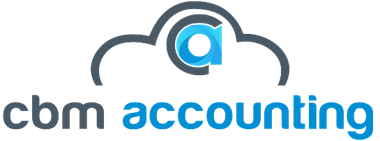how to add xero data to a business dashboard
A key component of a company’s financial recording and reporting system. While the chart of accounts can be similar across businesses in similar industries, you should create a chart of accounts that is unique to your individual business. You should ask yourself, what do I want to track in my business and how do I want to organize this information? For example, we often suggest our clients break down their sales by revenue stream rather than just lumping all sales in a Revenue category.
Hardware-Printers could be further broken out in Hardware-Printers-HP and Hardware-Printers-Canon. At that point, further detail may be more harm than help and lead to inaccurate accounting. It is generally better to have less detail and keep it accurate than to have inordinate amounts of detail that tend to be inaccurate. For example, under GAAP, a fixed cost like equipment depreciation would be a direct cost for a manufacturer. However, in a managerial-focused environment, fixed costs are often kept out of gross margin, to keep it from being distorted by swings in sales. Gross margin is the profit after subtracting direct costs from sales.
Table of Contents
How a chart of accounts works in construction
Here’s Warren Buffett’s Best Advice to Prepare for a Bull Market – The Motley Fool
How to Set Up a Chart of Accounts for Bookkeeping
Clean Up Your Chart of Accounts by Automating Your Payables
Example of a Chart of Accounts
How to Use Your Chart of Accounts
How a chart of accounts works in construction
Some accountants recommend sticking with a GAAP-oriented chart of accounts and generating management-oriented financials through custom reports. These custom reports cobble together numbers from various sections of the chart of accounts to get the financial statement layout management is looking for. They know (especially the entry-level providers) most people would struggle to set up a quality chart of accounts. To fix that, they automate the setup part and build a pre-fabricated chart of accounts into the software. Recently, I was helping a technology company owner improve his financial reporting. Financial reporting standards dictate that there are two broad categories of accounts in a company’s chart of accounts.
Within the accounts of the income statement, revenues and expenses could be broken into operating revenues, operating expenses, non-operating revenues, and non-operating losses. In addition, the operating revenues and operating expenses accounts might be further organized by business function and/or by company divisions. A chart of accounts is a list of all accounts—including asset, liability, expense, revenue, and equity—that are included in a business’s general ledger. The size of the company will largely determine the number of accounts listed in a company’s COA.
Here’s Warren Buffett’s Best Advice to Prepare for a Bull Market – The Motley Fool
Here’s Warren Buffett’s Best Advice to Prepare for a Bull Market.
The chart of accounts is therefore the foundation of the financial statements. Your chart of accounts allows you to get an overview of all the debts you owe to others—the company’s liabilities. In your liability accounts, you’ll see all your short, medium, and long-term loans, and interest payable on those loans. And if you have any employees, your chart of accounts lets you know what your business owes for wages payable.
How to Set Up a Chart of Accounts for Bookkeeping
Indirect costs are overhead expenses that relate directly to sales yet cannot be traced directly to a specific product or job. Examples include factory supervisor wages, incidental supplies (e.g., tape, glue, screws), machinery repairs, shop building insurance, etc. Expenses such as tax preparation fees, marketing, and legal expenses would not be considered indirect costs, but rather operating or general/admin expenses. In certain industries such as advertising, farming, or consulting, most of the costs run together under the broad category of operating expenses.
The first recognizes income from a project once it’s totally complete. Residential developers may be recognizing their income in this way, as they only get paid when a house sells. If you’re a contractor, there are two fundamental ways to recognize income — completed contract or percentage of completion. The chart itself consists of a list of numbered accounts, with their name and a short description of what’s included in that account. You can see a few accounts that are unique to the business, such as Cooking Supplies, and other accounts that are common only to retail business, such as Cash Discrepancies and Merchant Fees. \nThe sample Chart of Accounts, shown, was developed using QuickBooks.
Customize the COA by adopting a suitable pattern for account numbering based on your company’s size, departments, structure and operations. Remember that the best chart of accounts structure is the one that serves your managerial accounting purpose. The COA is customizable; hence, it serves the need of every business organization. A COA is a financial tool that provides an extensive understanding of cost and income to anyone who goes through the company’s financial health. There are five primary types of accounts, i.e., asset, liability, equity, income and expense.
Clean Up Your Chart of Accounts by Automating Your Payables
A firm is a business organization—such as a corporation, limited liability company, or partnership—that sells goods or services to make a profit. Doing so ensures that accurate comparisons of the company’s finances can be made over time. These sample charts will give you an idea of the different accounts you’ll set up and the system for adding new account numbers. If manually done, an organization should come up with its own numbering system for each account’s corresponding account number. We are a subcontractor and the GC we are working for is asking us to sign and notarize progress payment line waivers for amounts they have not paid us for, is this legal?
Tax and audit CPAs adjust your reports to fit their purposes anyway, so go ahead and make a complete break. The new goal is financial reports that provide the metrics you need to run your operation throughout the year. It is hard for me to be critical because 90% of business owners can probably relate to never having looked at their chart of accounts. Even many controllers and CFOs are weak on how to structure a robust chart of accounts that easily and plainly produces the financial information management wants to see.
Example of a Chart of Accounts
The problem, however, is that unless you have automated accounts payable software, finding the correct account isn’t always such a simple task. The completed contract method is mostly used by owner-builders and spec developers because the sale price is not known until the project is complete.. Using this method, revenues and expenses are recorded when the sale is closed.
Most companies choose a metric such as labor hours and estimate a rate per labor hour that “uses up” these indirect costs over the course of a month or year. For example, consider a simple manufacturer who last month had $1,000 of manufacturing supplies and $1,000 of shop repairs, for a total of $2,000 of indirect expenses. Based on that, the company decides to allocate indirect cost to future projects at a rate of $10 per hour ($2,000 total costs/200 shop labor hours).
A chart of accounts allows for more accurate reporting and prevents data entry errors. It also helps with maintaining financial privacy since only authorized personnel can view the reports and they only see the information relevant to their department. This refers to the specific accounts to be used in making journal entries such as cash, accounts receivable, accounts payable, retained earnings, utilities expense, and revenue.
How to Use Your Chart of Accounts
\nIf you’re setting up your Chart of Accounts manually, be sure to leave a lot of room between accounts to add new accounts. GAAPGAAP are standardized guidelines for accounting and financial reporting. Horizontal analysis is used in financial statement analysis to compare historical data, such as ratios or line items, over a number of accounting periods. Accruals are revenues earned or expenses incurred which impact a company’s net income, although cash has not yet exchanged hands. Examples of expense accounts include the cost of goods sold ,depreciation expense, utility expense, and wages expense. In the end, the chart of accounts, the budget, and management preferences all must align in an effective accounting system.
A cost center is a function within an organization that does not directly add to profit but still costs an organization money to operate. Thankfully even a full-scale reboot does not require an astronomical amount of time or energy. When you add a new account number, space out the numbering system to leave room for growth. For example, you might number your business accounts 1001 – Cash account, 1010 – Business checking, 1015 – Business savings. Then when you need to add accounts, you can fill in the gaps between one business account number and another. To do this, she would first add the new account—“Plaster”—to the chart of accounts.
The discussion flows and inevitably someone says “It would be nice if we could see…” The CFO gets an exasperated expression on their face and writes the request on their notepad. The https://bookkeeping-reviews.com/d Query Language comprises several different data types that allow it to store different types of information…
- As an aside, for companies subject to US tax regulations, Meals is an example where you’ll want an easy way to give your tax accountant a stand-alone total amount at year-end.
- Yes, each business should have its own Chart of Accounts that outlines the specific account categories and numbers relevant to their operations.
- A firm is a business organization—such as a corporation, limited liability company, or partnership—that sells goods or services to make a profit.
- If you use a system like Xero or Wave Accounting, a chart of accounts will be provided to you during the setup process.
- The importance of a chart of accounts lies in its ability to organize financial records.
In a well-designed chart of accounts, that offset account is typically grouped with the accounts that receive the actual supplies and repairs expense. That way if actual supplies and repairs total $2,700 for the month, you can see at a glance that indirect cost was overapplied to projects ($3,000 applied, compared to $2,700 actual). As each hour of labor cost is posted to the system, the estimated indirect cost of $10 per hour is also automatically posted.
For an organization, it is important that all transactions are categorized correctly because they will be used as the basis for generating reports about the business. As transactions are entered into the accounting software, they are posted to the appropriate accounts in a double-entry system. Financial statements provide a summary of these transaction amounts for a given time period.

